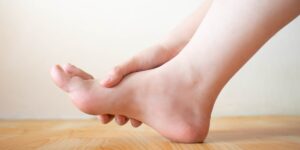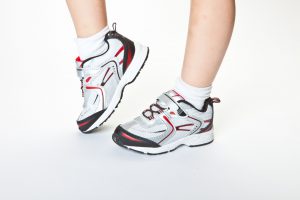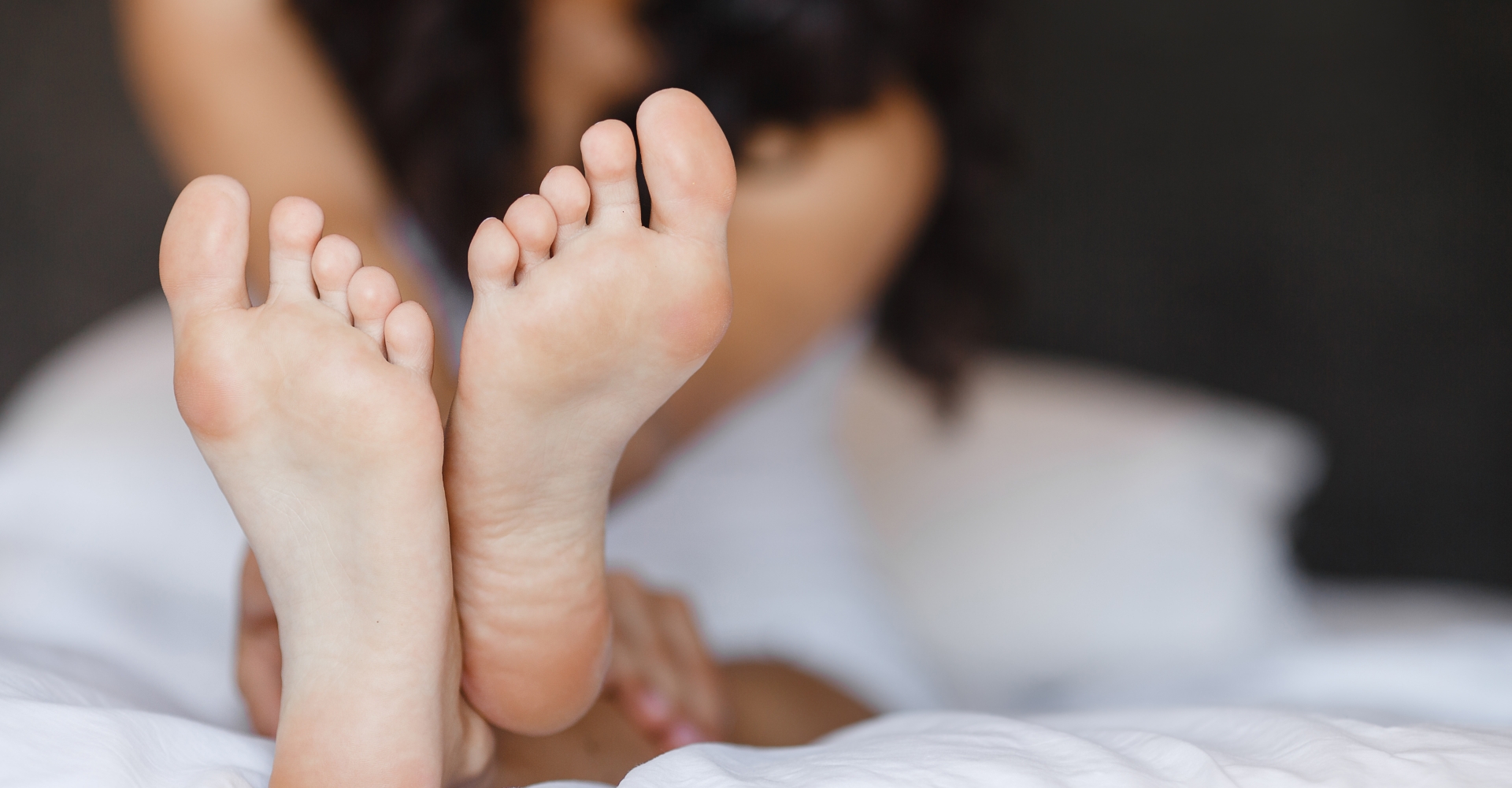Medically Reviewed by Dr. Rachel N. Verville
March 14, 2023

Do you experience discomfort when walking or standing for long periods of time? While this can be caused by a number of issues, one of the most common causes is flat feet.
Flat feet refer to feet that lack a natural arch along the bottom of the foot. This leads to more pressure on the sole of the foot and surrounding structures like the heel and ball of the foot.
Flat feet are often the result of genetics. In certain families, the natural arch of the foot fails to develop during childhood, and by adulthood, the foot is completely flat along the bottom. Other cases of flat feet may be caused by aging, obesity, or arthritis. Sometimes an injury to the foot can reduce the arch and produce symptoms of flat feet.
While flat feet are not a dire condition, they can be uncomfortable. When your flat feet are impacting your quality of life, it may be time to seek treatment. Fortunately, there are several different ways to either fix flat feet or alleviate the symptoms that they cause.
6 Ways to Address Flat Feet
If you struggle with flat feet, you can find comfort in knowing that there are numerous treatment options. Of the many ways to approach treating flat feet, some are simple and temporary, while others are permanent solutions. Learn about 6 of the most common ways to address flat feet below.
1. Physical Therapy
One of the best ways to treat flat feet is through physical therapy. Specific stretches and exercise can help ease the symptoms associated with flat feet. There are several different exercises used to address flat feet, including the following:
- Heel stretches
- Golf ball rolls
- Arch lifts
- Calf raises
- Toe raises
These exercises stretch the muscles and tendons along the bottom of the foot to alleviate pain and cramping caused by the lack of an arch. When addressing flat feet with physical therapy, it is essential to work with a podiatry professional, as stretching incorrectly can have adverse effects.
2. Surgical Correction
When the symptoms of flat feet become debilitating or impact your ability to move comfortably, you may need surgical intervention. There are several types of surgery that can reduce the severity of flat feet and create more of a natural arch. This includes tendon repair or bone and joint fusion.
These procedures ease the pressure on surrounding structures within the foot and help construct a more pronounced arch. They make walking easier and relieve many of the symptoms caused by flat feet.
3. Shoe Inserts
One of the simplest and quickest ways to address flat feet is with shoe inserts. There are many different shoe inserts that are designed specifically for people with flat feet. When worn properly, these inserts provide added support to the foot and even add a slight lift where the arch should naturally be.
Shoe inserts are available over the counter at many retailers, but you may benefit from custom-made shoe inserts. Custom inserts can be made to fit your exact shoe size and fit comfortably against your unique foot measurements.
4. Medication
Many people who have flat feet experience little to no symptoms, but others experience extreme discomfort. This is most notable when standing or walking for long periods of time. To ease this discomfort, you can take medications that reduce pain and inflammation.
Non-steroidal anti-inflammatory drugs (NSAIDs) are the most commonly used medication for those with flat feet. These drugs relieve any swelling or inflammation caused by walking and standing on flat feet.
5. Weight Loss
While many cases of flat feet are congenital or acquired through an injury to the foot, others are caused by obesity. When there is an excess of weight, it applies increased pressure to the foot when standing or walking. Over time, this can reduce the natural arch and cause the sole to be completely flat.
If your flat feet are caused by excess weight, reaching a healthier body weight can help restore the natural arch of your foot and relieve your symptoms. For many patients, this does not need to be a significant amount of weight. Simply eating healthier and exercising should help drop some excess weight and reduce the pressure on your feet.
6. Orthotic Foot Supports
Shoe inserts are the most common support used for flat feet, but there are other forms of orthotic support that can accommodate patients with this condition.
Orthotic support includes braces that wrap around the bottom of the foot and up the ankle. These braces provide support where the natural arch would be and add support to the surrounding structures of the foot.
Another type of orthotic support is an orthotic shoe. Orthotic shoes are designed with built-in support that compensates for the lack of a natural arch, relieving pressure on the entire foot when standing or walking for long periods of time.
Orthotic shoes are available in various sizes and styles to accommodate anyone suffering from the symptoms of flat feet.
Getting Treatment for Flat Feet
Do you struggle with the discomfort and difficulties associated with flat feet? RNV Podiatry is a leading provider of flat foot treatments, including everything from orthotic devices to physical therapy exercises.
Dr. Verville will work directly with you to determine the best course of treatment for your flat feet, helping relieve your symptoms and improve your mobility.








